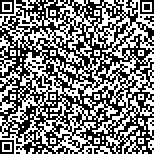| 摘要: |
| 于2013年12月3日清晨、正午、傍晚采集了大亚湾大鹏澳海域3个站位的微表层和次表层水样, 经过三级分级过滤(小型: >20μm; 微型: 2.7~20μm; 微微型: <2.7μm)后, 对其进行高效液相色谱(HPLC)色素分析, 通过藻类色素化学分类法(CHEMTAX)分析不同浮游植物对Chl a的贡献, 研究了微表层及次表层光合色素粒径特征及浮游植物群落结构差异。结果表明, 冬季大亚湾海域水体中存在的浮游植物光合色素主要有17种, 以岩藻黄素和Chl a含量较高。微表层总Chl a平均浓度为0.797μg/L,略高于次表层的0.714μg/L, 不存在显著性差异(P>0.05); 微表层和次表层Chl a含量清晨最高, 傍晚次之, 正午最低。微表层不同粒径浮游植物对Chl a的贡献率从大到小依次为小型、微型、微微型浮游植物, 分别为80.7%, 10.1%和9.2%。CHEMTAX分析结果得出, 冬季该海域硅藻占绝对优势, 甲藻、定鞭藻、青绿藻、蓝藻、隐藻所占比重相差不大。微表层中定鞭藻、青绿藻和蓝藻等较小粒径浮游植物种群所占比重高于次表层, 说明相对于次表层, 微表层中的浮游植物群落有小型化趋势。 |
| 关键词: 微表层 浮游植物 光合色素 粒级结构 大鹏澳 |
| DOI:10.11759/hykx20150825001 |
| 分类号: |
| 基金项目:国家自然科学基金项目(41276154); 中国水产科学研究院黄海水产研究所级基本科研业务费项目(20603022015002); 农业部南海渔业资源开发利用重点实验室开放基金(LSF2014-04); 农业部东海与远洋渔业资源开发利用重点实验室开放基金(2014K04) |
|
| Daily changes of phytoplankton community structures revealed by pigment signatures in the sea surface microlayer at Daya Bay in winter |
|
CHEN Fei-yu,JIANG Tao,ZHANG Ling,WANG Xiao-dong,MA Chang-jiang,WANG Zhao-hui
|
| Abstract: |
| The aim of this study was to understand the characteristics of size-fractioned pigments and differences in the phytoplankton community between the sea surface microlayer (SML) and subsurface water (SSW). Water samples from the SML and SSW were collected in the early morning, at midday, and in the late afternoon on December 3, 2013, in the Dapeng Cove of Daya Bay. The samples were then filtered into three differently sized fractions (micro, nano, and pico), and phytopigments were determined individually by high-performance liquid chromatography. Seventeen phytopigments were detected, with the most abundant being Fucoxanthin (Fuco)and chlorophyll a (Chl a). The average concentration of Chl a at the SML was 0.797 μg/L, higher than that for SSW (0.714 μg/L), and there was no significant difference between the SML and SSW values (P<0.05). The highest Chl a concentration was found in the morning and then in the late afternoon, and the lowest was found at midday. The phytoplankton in the SML was dominated by micro-Chl a, accounting for 80.7% of the total Chl a concentration, followed by nano-Chl a, (10.1%) and pico-Chl a (9.2%). Therefore, the phytoplankton community in the SML was dominated by diatoms, and the proportion of other species showed similar low values. The proportion of haptophytes, prasinophytes, and cyanobacteria in the SML was higher than that in the SSW, suggesting that the phytoplankton community structure in the SML had a trend of miniaturization. |
| Key words: Sea surface microlayer Phytoplankton Photosynthetic pigments Size structure Dapeng Cove |
